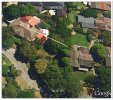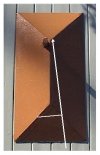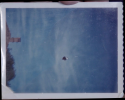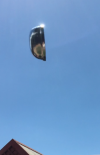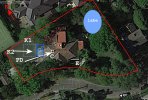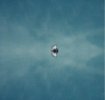I want to make up for some mistakes I made earlier. I was relying too much on:
-Personal experience with limited info.
-Personal experience as a child with a child’s perceptions.
-Old memories with some confabulations.
In short, I was rushing. I’m going to make up for that.
A summary of the state of consumer Polaroid camera tech in 1966.
There were two different film types in use:
- The older and original roll film. This was introduced in 1948.
- The pack film type first put on the market in 1963.
Confusingly, the Polacolor process - color prints - also first came out in 1963. There was color roll film and color pack film. My guess is that the Polacolor process was developed with the new pack film in mind, but they also wanted to sell color roll film, because there were so many roll type cameras out there.
More confusion. There were different sizes of roll film. Type 40 is a
size of roll film
. The largest kind. Just as 35mm film is a
size; and there are many different
kinds of 35mm film. Negative, positive, slow, fast, color, B&W... infrared even.
There were smaller roll films. Kibel's camera uses type 40 roll film. The largest kind. He was specifically using Type 48 film. Color roll film using the Polacolor process.
These color film types - roll or pack - are basically the same, and use the same basic kind of development system. The pack film type is easier to use. The most noticeable difference for the consumer is that the roll film is hard to load and develops inside the camera. Pack film is easier to load and advance, and the prints develop outside the camera. With the pack film cameras, you pull out a print still attached to the negative, wait, and then peel the negative off the print.
This is
not the 1972 kind of
integral film that spits out of the camera with an electric whir and that you watch develop.
This commercial shows how the older type 40 roll film camera works. This commercial was made before the color roll film was available, but that doesn’t matter. Kibel’s camera would work like this.
Don Ameche sets the self-timer and he poses with Perry Como. Ameche advances the film by pulling out the negative of the previous shot (or the leader) and throws it on the floor. That starts the development process. He opens the back of the camera and peels the print off the negative.
Schematic of how type 40 roll film advances through the camera.

It's important to know that there are two separate rolls: the negative roll and the print (positive) roll. The negative roll is exposed and then makes a 180 degree turn when advanced. The print roll advances straight through. That's what makes it possible for the tab you pull out of the side of the camera to be the negative of the
previous shot. Except for the first shot, of course. At that time, you're just pulling out a leader. (Could you call it backing paper?)
Advancing the roll squishes a pod of chemicals that develop the negative
and transfer the dyes to the print,
and stop the development process,
and fix the print,
and produce a hard shiny layer on the print surface. Real genius stuff.
You don't have to start the development process right away. You can let the exposed negative sit in the camera, just like a regular film. The latent image on the negative will wait to be developed.
This commercial shows how the newer pack film Polaroid cameras work.
You just pop a cartridge in the camera. You pull out the negative and the print both. They are stuck together. You wait for 60 seconds (or so) and peel the print and negative apart. Easier. This is not the kind of camera Kibel used. But it did exist in 1966.
Differences.
Pack film prints always have straight edges. The roll film prints seem to have scalloped or crenulated edges. These edges are cut into the print roll at the factory, not by the camera. I don’t know whether some roll film prints may have had straight edges, or whether my memory of straight edged prints is faulty - confabulation. Fifty-six year old memories from childhood shouldn’t be relied upon. My mistake.
Kibel said he was using a Model 800 that uses Type 40 roll film.

Everything we see on the Internet in 2024 is consistent with that.
The images we see on the Internet in 2024 seem to come from several different physical photographic prints. Which is consistent with the story that Kibel had duplicate prints made. In 1966 there were two different ways to get duplicate Polaroid prints.
-A consumer could buy a Polaroid print copier. The duplicate copies are produced inside the consumer’s Polaroid camera. The copier is a projector that shines a focused beam of light into the lens of a Polaroid camera. The duplicate copies would look just like normal Polaroid prints - size, aspect ratio, scalloped edges, and so on.
-A consumer could send an original Polaroid print to be professionally copied. I know that the Polaroid Corporation offered this service. I
suspect that independent labs also offered this service.
Things I don’t know:
-Would these duplicate prints the consumer got back look just like a regular Polaroid print? Size, aspect ratio, scalloped edges?
-Would the duplicates be printed on Polacolor type film? Or would an inter-negative be produced and the prints then produced on “conventional” color print paper?
I suspect duplicates made by the Polaroid Corporation would be made on Polacolor type film, and would look much like the original print. Size, aspect ratio, scalloped edges, Polacolor process color tones, brightness and contrast...
Would an independent lab use the inter-negative process? Don’t know. We do know that Kibel says he had negatives. We don’t know where or how Kibel got his duplicates and the negatives he talks about.
Type 40 film is a generic size. The gate in the Model 800 camera, and all other cameras using type 40 film, is 3.25 inches by 4.25 inches. This would produce finished prints with an image size of 4.25 inches wide by 3.25 inches high . Basically a 4:3 aspect ratio.
The more modern pack film cameras, introduced in 1963,
seem to produce prints in 4:3 as well.

The various Internet images we see in 2024 all have a 4:3 aspect ratio. Which is consistent with the Model 800 camera and the Type 48 Polacolor film the Model 800 would use.
Compare:


Kibel was holding his camera "sideways." The image is what we in 2024 call "portrait" as opposed to what we call "landscape."
Most of the artifacts we see in these Internet images are consistent with those typical of Polacolor Polaroid prints. Some are clearly digital artifacts due to being scanned, and two other controversial artifacts
seem to be digital artifacts. I’ll talk about those artifacts in a different post.
I’ll also talk about what I think this model “UFO” actually is - not a service bell, but more likely a baby buggy “hubcap” - the specular reflections we see on its chrome-plated or nickel-plated surface, and why I think this photo is not a double exposure or “montage” but something produced in-camera. I’m going to take this slow and careful this time.

